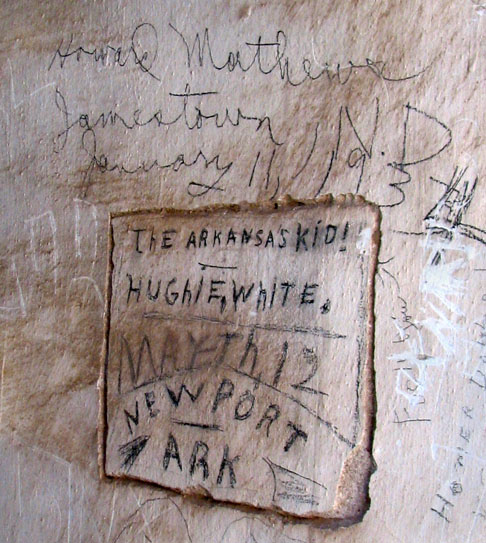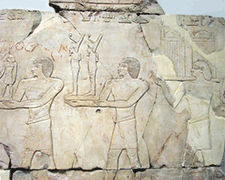This relief is in pieces, fitting into three sections. The graffiti is only in one section. Other areas have not been finished. "The red outline drawings on the blocks reflect the preliminary stage in the production of relief carving. Some blocks from the tomb have carved outlines; others show finished relief with interior modeling." _Art for Eternity_, pager 126
Was the unfinished nature of the tomb an attraction for the later scribers? Was some important finishing step missing that would have made this sancrosanct against such 'violation'? Yet
the info card tells us "Ancient graffiti have been found all over Egypt, in rock quarries, in mountain passes, in remote desert valleys, and even on tomb and temple walls. Most of them represent far more than mere acts of vandalism."
It includes "records of their work along with commentaries on the current political situation". Also, "prayers for the well-being of the writer".
Therefore, archaeologists find such of interest in studying an area. How old does graffiti have to be to be more than, "fool's names in fool's places"? At the Yuma Territorial Prison, each of the cells have been blocked to prevent entry and graffiti. We view through the bars of the doorways, seeing some scratchings dated as recent as from the 1970s, oooh, 'foolish'! But I find the engraving of an 'Arkansas Kid' interesting:





